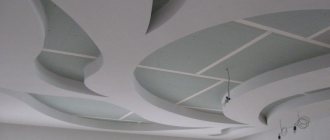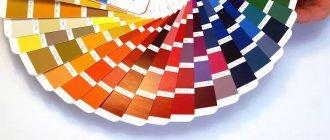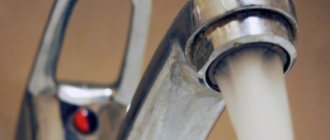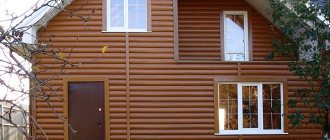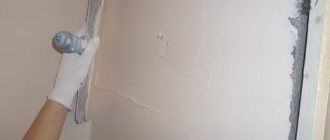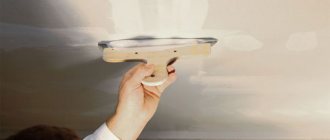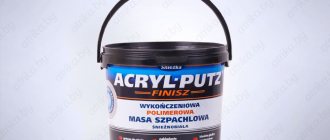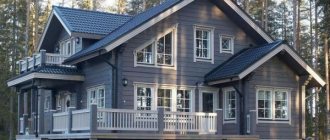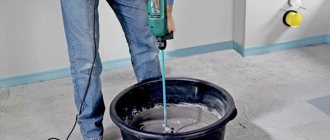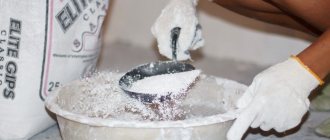Articles
All photos from the article
If you need to repair damage and cracks in wooden structures, then epoxy wood putty is perfect. This group of compounds has a number of advantages, thanks to which it stands out from the crowd and can be used where other options are unlikely to be suitable. But there are some limitations, we will also consider them so that you understand this issue as best as possible.
In the photo: the composition includes epoxy resin for wood and a special hardener
Features of the material
After drying, the mixture forms a hard layer, which, depending on the shape, retains its geometry. In addition, epoxy putty has a lot of positive qualities, including:
- versatility;
- excellent base for applying paint;
- elimination of surface defects;
- no odor;
- durability while maintaining an aesthetic appearance;
- resistance to mechanical stress;
- low price.
Depending on the composition, the putty can be waterproof, chemically resistant, does not shrink and retains its properties for quite a long time.
Epoxy putty: quality certificate required
Any material (including epoxy putty) must have a quality certificate. Products must comply with established European standards, as well as the standards of the country of sale.
In addition to the quality certificate, there must also be sanitary and epidemiological conclusions!
Certificates must be presented to the consumer upon request!
A quality certificate is the only reliable confirmation of product compliance with all standard requirements
What is stated in the certificate:
- Name of the manufacturer;
- Quality passport;
- Technical name for putty;
- Color after drying;
- Appearance after drying;
- Drying time at the specified temperature;
- Grinding degree;
- The ability of putty to flow off a vertical surface;
- The share of volatile substances, in percent;
- Elasticity when bending;
- Impact strength;
- Grinding ability;
- Weight.
This is followed by the conclusion of the laboratory of the technical control department and the signature of the head of the laboratory.
Before you buy putty, you need to carefully study the instructions to make sure that this is the mixture you need. Only after finally making sure that it is suitable for the purpose you need, should you purchase it.
Main components
Epoxy resin putty is a two-component material containing:
- epoxy resin;
- filler (metal powder or fiberglass shavings);
- hardener.
The two components are sold as a set, but in separate containers, since the ingredients must be mixed immediately before use. The composition must be stirred thoroughly, making sure that both components are evenly distributed throughout the volume of the solution. It is also worth remembering that polymerization of epoxy resin occurs within 8 hours.
Types of putty by purpose
Based on the nature of the filler, wood, concrete, plastic and metal can be treated with epoxy putty. Using the mixture will help partially restore and strengthen the structure of the base coating.
For wooden surfaces
Epoxy wood putty does not shrink after drying. This ensures the elasticity of the material, which is quite important when working with wood. The resulting coating lends itself well to sanding and processing, after which it can be painted in the desired color.
Epoxy wood putty is used in the following cases:
- if necessary, repair cracks, potholes, scratches;
- floor repair work when sealing joints and cracks;
- waterproofing works;
- processing of doors, windows and wooden furniture.
When performing exterior painting work, you should choose epoxy mixtures. The putty is characterized by a two-component composition based on petroleum resin, pigment substances and organic solvents. Speaking of disadvantages, epoxy wood putty is not covered with stain. Therefore, if you plan to impregnate wood with this composition, it is better to discard the material.
This composition is resistant to deformation, perfectly fills surface defects, is moisture-resistant, wear-resistant and durable.
For metal
Having excellent adhesion, the epoxy composition is suitable for leveling metal surfaces. It is preferable to use a mixture with a filler of the smallest metallized particles that the surface to be putty contains.
This putty is widely used by motorists, as it reliably protects metal (in particular the car body) from corrosive processes and rust.
For plastic
Epoxy-based putty is characterized by high adhesion and elasticity, so it can be used to restore PVC pipes or when repairing car bumpers. The material is used in the following industries:
- construction;
- shipbuilding, aircraft manufacturing and mechanical engineering;
- construction of bridges;
- construction of pipelines and various metal structures;
- tanks and hydraulic installations.
Using epoxy resin will help fill in bumps and other defects on the car body. Among the disadvantages, high toxicity is noted, so all work should be carried out in a respirator and protective mask.
For concrete base
Epoxy putty for concrete is made with the addition of cement and coarse sand, which significantly increases the adhesion of the base to subsequent finishing. Impregnation with this composition makes the surface rougher, after which it is ready for plastering.
When sealing cracks in concrete, regular epoxy glue is often used to fill the crack and then level the surface.
In the video: Sea-Line universal epoxy-based putty.
For wood
This putty is made from fine sawdust. It can be used to seal cracks, glue wood, level the surface, restore doors, windows, and wooden furniture.
Repair is a set of measures to restore the operational or serviceable condition of an object and/or restore its service life of the window frame, photo: housebb.ru/images/stories/vnutrennie-raboty/rem-faq/005_2.jpg
The putty is easy to sand after application and can be painted in any color. However, you cannot paint with stain. The composition of an object (set), which includes (including) many parts (elements, components), as well as a description of the quality, quantity and other characteristics of the parts of such an object (set) does not harden immediately and therefore it is very easy to work and you can correct the surface during work can mean: Work - the functioning of any system - mechanism, biocenosis, organism or community - as well as its part.
To make it yourself you need to use sawdust as a filler.
Making your own putty
You can make epoxy putty yourself. To do this, you need to purchase epoxy resin and hardener, as well as fillers, depending on the type of surface to be puttied. For preparation you will need:
- for composition on a wooden base - fine sawdust, chalk or gypsum;
- when working on metal – metallized particles, usually aluminum powder;
- when used on plastic - fiberglass and colored pigment, which will help make the putty area invisible;
- for concrete pavement work - cement, sand or fiberglass.
Making the composition is quite simple, but maintaining the proportions is important. The amount of hardener should not exceed 3% of the total volume of the mixture.
General characteristics
The presented building material hardens slowly, so the solutions can be mixed slowly to obtain the desired consistency. The polymerization process begins an hour after application to the surface. The mixture hardens after 6 hours. Then you need to wait a few more hours and only then start sanding and finishing.
An undoubted advantage is that after applying epoxy resin, the products do not need to be primed, but can immediately proceed to painting. To do this, it is enough to clean the surface from dirt and dust, and if necessary, degrease it.
The procedure for puttingtying plastic
The application of putty is carried out in compliance with the following steps:
- surface preparation;
- making a solution
- application of material;
- grinding;
- coloring.
Preparing the base
Before applying the mass to the surface, it is necessary to prepare the base. The plastic area is cleaned of dust, treated with a sheet of sandpaper, wiped with a damp cloth, or dusted in another way. Experts recommend degreasing the base to improve adhesion to the surface. The coating is then dried.
Preparation of the solution
You can putty the surface with a product that is offered in ready-made form in the store, or you can prepare it yourself. Manufacturers produce some putty compositions as two-component ones (epoxy, polyester) that require dilution. Before work, it is necessary to combine the base and hardener in a container, taking into account the ratio of ingredients indicated on the package. The putty is prepared in volume for application on the day of work, because... the mass will harden and will be unsuitable for use.
When processing large areas with large irregularities and depressions, it is recommended to add specialized additives to the putty mixture to increase the elasticity of the material. After hardening, the composition acquires high strength.
The advantage of additives for improving elasticity is to reduce the consumption of mixtures, increase the level of water resistance, resistance to temperature changes, the formation of cracks, and prevent delamination of the coating.
Applying putty
The putty is applied to the base using a narrow spatula. The mass is distributed over the damaged base, carefully leveled with a thin layer of about 2 mm. The layer of product should be even. The coating is dried for 1-2 hours, then sanded using sandpaper (No. 40).
The dust is removed with a dry cloth and a primer is applied, the composition of which is compatible with the selected putty. At the next stage, another layer of putty is applied. Finally, the prepared area is primed.
To eliminate large defects, various types of putties (filling and finishing) are used. First, the filling composition is applied to the base and distributed over the surface. After the mass has dried, sanding and primer treatment are performed. Finally, finishing putty is applied and sanded, then treated with a primer.
Sanding and painting
Sanding the plastic base helps create a smooth surface. The work is carried out using a standard sheet of fine-grained sandpaper. Then the surface is rubbed with a sponge in a circular motion with slight pressure.
At the next stage, paint of a suitable color scheme is applied to the coating.
If there is damage along the entire plastic surface of the product, the base is completely puttied with undamaged areas.
Then the base is painted in 1 or several layers and dried.
Application of material
Epoxy-based putty can be used for both interior and exterior decoration, so the composition is highly frost-resistant. The mixture provides reliable protection of the surface from fungus and mold. The coating can be matte or semi-matte.
To obtain a high-quality surface, you need to apply putty in 2 layers. The drying interval for each layer is 24 hours. Application work must be carried out at a temperature not lower than +5°C.
Using epoxy putty (2 videos)
Various epoxy putties (22 photos)
The best manufacturers
The list of popular putty manufacturers includes the following brands:
- Plastic18 - the manufacturer produces the material for the finishing layer. The products have an affordable price. Packages weighing 0.2 liters are offered.
- Solid Flex - this brand produces a polyester type of putty with the addition of a plasticizer. The product can eliminate cracks in the base. The mass hardens in 30 minutes. The material is optimal for fixing soldering points and connecting plastic parts.
- The manufacturer ROBERLO produces MasticPlast finishing putty based on polyester resinous substances. The product is offered complete with a hardener. The materials can be combined with epoxy primer mixtures to increase the density and durability of the coating.
- APP - the manufacturer offers Flex Poly-Plast mixture for working on plastic coatings. The putty contains polyester particles that increase the elasticity and strength of the composition. The product easily sticks to different types of plastic and can withstand treatment with chemical detergents with acidic and alkaline components.
- NOVOL - the manufacturer produces Bumper-FIXe putty mixture, which is distinguished by its affordable cost and high level of quality. The putty is universal and can be used to eliminate defects on different types of plastics.
